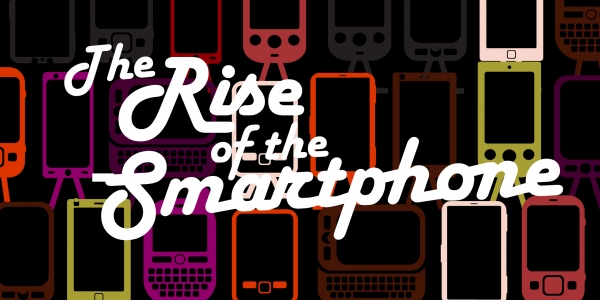Responding to the rise of the smart phone

Figures out now reveal that the global smartphone market grew by 42.5 per cent year-on-year in quarter one of 2012. Samsung currently holds the number one spot while Apple has seen its share grow by 6 per cent, bringing it up to 24 per cent.
The rapid rise in smart phone ownership is evident no more so than in the UK where the army of smart phone users is growing far quicker than in any other developed country. And it’s not just phones. Smart phone users are 50 per cent more likely to own a tablet device according to Google making the desktop and the laptop’s reign with internet surfers and online shoppers far less secure than it was a couple of years ago.
Reports from ebay have revealed that in 2011 over 10 per cent of its sales came from a mobile device – and that figure is expected to increase going forwards. Desktop browsing is now officially in decline as people enjoy ‘couch surfing’ on tablets, ipods and smart phones. More and more people are using their phones to access data on the move and it seems that there is always another cutting edge model awaiting release. Recent statistics from mobile analytics firm Flurry indicate that consumers are now spending more time on mobile apps than on the web.
Note the furore that surrounded Facebook’s latest and biggest acquisition yet, popular iPhone-only photo sharing app, Instagram. Once the initial shock had subsided regarding the figures involved - $1bn dollars – there was general recognition of Facebook’s savvy in its quest to lure users of mobile devices. The two key elements of the story – Facebook and the $1 bn dollars – are perhaps the clearest indicator that the smart phone is expected to be the key channel for all things digital in the coming years.
Add to the above the facts that 46 per cent of all mobile users own a smart phone and there has been a doubling of tablet and smart phone useage over the last 12 months and we can easily surmise that the amount of people engaging with brands on-line, via their mobiles, can only grow more. The rate at which it will continue to grow is open to speculation but it’s a sure bet it will be very quick.
Given that, going forward, all Livelink’s websites will be built using responsive theme technology as best practice. To build separate sites for desktop and mobile is ultimately more costly, involves more work and is not as satisfactory. Mobiles have different screen sizes anyway - eg. Iphone, Blackberry – so a one size fits all mobile response doesn’t actually work.
Enter responsive web design, a design which responds to the screen resolution and size of the user’s device allowing a website to adjust to the size of the screen and its resolution. A website will appear in full width when browsed on a desktop or laptop and will adjust when viewed on a hand-held device without hiding content outside of the screen or necessitating the use of the scroll bar, left and right, to read the content. Flexible and fluid layouts are used that adapt to almost any screen and the website automatically becomes fit for purpose.
Curious about what your website looks like on a hand-held device? There are various sites like www.testiphone.com and www.howtogomo.com that will allow you to see exactly that and, in doing so, convert you to the aesthetical benefits of responsive theme technology next time your website’s up for review.
For more information on mobile and responsive design, download Livelink’s Simple Guide to Mobile, Part 1.
